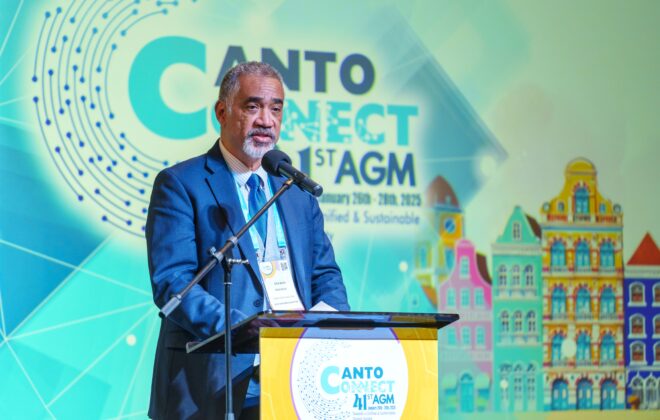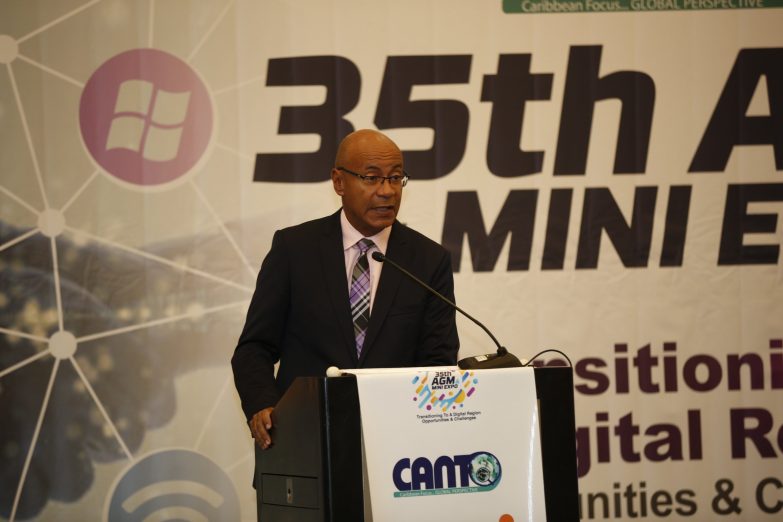CANTO Weekly Newsletter – BNamericas 04/17/15
Roundup: Altice, Tigo Bolivia, TATT – Regional
GSA revises up 2015 LTE network forecast – Regional
Telefónica quickening pace of NFV deployment – Regional
Why is Peru one of the world’s fastest-growing internet markets? – Peru, Regional
Hondutel back in black – Honduras
Roundup: Altice, Tigo Bolivia, TATT – Regional
Altice, which owns the telcos Orange and Tricom, said it intends to invest US$133mn in the Dominican Republic.
The Luxembourg-based company said it will expand its fixed network in the country and introduce leading edge technologies in an effort to narrow the digital divide. The company aims to reach remote and underdeveloped localities.
***
Tigo Bolivia will invest US$130mn in expanding its fiber optic network, according to its 2015 investment plan. This is US$45mn more than in 2014.
The telecom’s intention is to reach 100,000 new homes and improve the customer experience.
***
Trinidad and Tobago’s telecom authority TATT has recommended a third mobile and internet provider to the cabinet.
The provider would boost competition, promote greater affordability and faster speeds and increase choice for consumers, among other benefits, science and technology minister Rupert Griffith said.
The carrier was recommended following an evaluation of service providers who had responded to a TATT call for proposals.
The name of the provider has not yet been announced.
GSA revises up 2015 LTE network forecast – Regional
The Global Mobile Suppliers Association (GSA) has changed its forecast for commercial LTE networks in 2015 to 460, 10 more than its last prediction made a month ago.
The GSA said that to date some 393 operators have launched LTE in 138 countries.
According to the GSA, of the total LTE operators, some 116, or 30%, are also investing in carrier aggregation technology for LTE-Advanced networks, which can double or triple the speeds achieved with LTE.
Some 64 operators have commercially launched LTE-Advanced service in 39 countries.
The most widely used spectrum worldwide for LTE deployments continues to be 1800MHz (band 3), used in 45% of LTE network deployments. The next most popular band is 2.6 GHz (band 7), which is used in 25% of networks and is the most prominent in Latin America.
800 MHz (band 20) is the most popular sub 1 GHz coverage band choice for LTE, though in Latin America the standard band used to complement 2.6GHz for LTE has been 700MHz.
Swedish network equipment supplier Ericsson predicted at the beginning of the year that LTE subscriptions would reach 110mn this year and overtake those of 3G.
“Cheaper devices that are better adapted to the user as well as improved coverage and speeds are among the main factors that are driving mobile technology to be a global phenomenon and which will soon be in the hands of most of the world’s population irrespective of age or geographical location,” said Ericsson’s marketing director for Latin America, Jesper Rhode, during the LTE Latam 2015 summit held in Rio de Janeiro last week.
In March, trade association 4G Americas, citing data compiled by consultancy Ovum, said that Latin America ended 2014 with 12mn LTE subscriptions, representing a 488% growth rate compared with 2mn at the end of 2013.
The region ended 2014 with 59 commercial networks in 22 countries, up from 37 in 2013.
Brazil has the largest number of LTE deployments in Latin America to date with seven and another two planned, followed by Colombia with five. Mexico has three limited deployments in the AWS band, and Chile has three in 2.6GHz. In late 2014, Argentina and Venezuela both awarded LTE spectrum.
Telefónica quickening pace of NFV deployment – Regional
Spanish telecom operator Telefónica is aiming to speed up the virtualization of network functions as the company seeks to improve performance, reduce costs and beat competitors to the draw with new products, Telefónica’s CTO Enrique Blanco told BNamericas in an interview.
Under Telefónica’s UNICA initiative that kicked off in June last year and which focuses on the deployment of virtual solutions from physical networks, the company is aiming to have more than 30% of its new infrastructure managed virtually by 2016.
But so important is this project that the company may reach its goal ahead of time.
“Not only is it still on course but we want to do it in less time given the efficiency benefits we can see,” Blanco said.
Telefónica has been trying to pare down its 45bn-euro (US$56bn) net debt.
Currently, many functions that are carried out on a network take place using specific hardware or software from specific manufacturers and work in isolation.
With so-called network function virtualization (NFV), operators will have more flexibility regarding how they manage capacity on their network; they will be able to add or shift around capacity.
“Virtualization will allow me to have these machines divided up, which makes disaster recovery much easier. What is most important is that you have all the resources that you need whenever you need them,” Blanco said.
Last year, Telefónica and Ericsson partnered in a joint research and development program for network virtualization.
Network equipment supplier Ciena’s CALA region CTO Héctor Silva recently told BNamericas that virtualizing functions like firewalls, load balancers, WAN optimizers and encryption accelerates the ability of operators to offer managed services in the cloud while improving performance and network security.
“The hardware becomes a generic platform that can allocate any one of these functions at any point in time,” Silva said.
Why is Peru one of the world’s fastest-growing internet markets? – Peru, Regional
The number ‘five’ seems to be something of a theme regarding Peru. The country is home to the fifth highest population in Latin America (30mn), has the fifth biggest FDI allocation (US$10bn in 2013, according to Eclac) in Latin America, and boasts the fifth largest internet base in the region.
The country has also the fifth most “affordable” internet” in Latin America and, more importantly, will have the fifth-fastest growth in internet users worldwide this year, according to recent estimates from online consultancy and research firm eMarketer. In terms of increasing user numbers, the country will only trail India, the Philippines, Indonesia and South Africa, eMarketer projected.
But why exactly will Peru’s internet growth will be so impressive?
There are different factors to consider. First of all, as eMarketer underlines, Peru still has very low internet penetration, which gives it a small base for comparison base. Internet is expected to reach 16mn people this year, which would be a 10.4% increase over 2014.
According to the country’s statistics bureau INEI, 24.3% of the country’s households had internet connection at end-2014, which is one of the lowest rates in the region. By eMarketer estimates, internet user penetration in Peru will be 52.6% this year, the lowest of the six countries for which the consultancy produces forecasts in the region, eMarkeketer said.
Furthermore, eMarketer estimates fixed internet penetration will reach 6.2% of the country’s population in 2015, compared to an average of 11.5% for Latin America.
Smartphone users are also still relatively thin on the ground in Peru.
For the GSM association (GSMA), Peru has the lowest smartphone penetration among the major economies in the region at just 19% in 2014, but will reach 57% in 2020. eMarketer predicts that 6.2mn Peruvians will own a smartphone this year, and 10.1mn by 2019.
Another factor in internet growth in the country is likely to be simply related to the eager adoption of broadband and digital services in the country.
Social media penetration in Peru, for example, is significantly above the global average and is also high among Latin American countries, according to a presentation by comScore.
While social media is used by 80.9% of internet users worldwide and 92.9% in Latin America, that figure is at 96% in Peru.
In another example of the growing adoption of digital services, a report by local banking association Asbanc shows that internet was the fastest growing vehicle for non-cash banking transactions in the first two months of 2015, up 42% year-on-year, driven mainly by a rise in the use of cash machines and points-of-sale (POS).
Nevertheless, internet banking still is the least-used method among the five main non-cash transaction types in the country.
The government does its part to extend connectivity through the Peruvian state private investment promotion agency ProInversión’s broadband connectivity program.
Hondutel back in black – Honduras
Honduras’s state-owned telco Hondutel is profitable again.
The firm posted a profit of 6.7mn lempiras (US$307,000) for the first quarter, the first positive financial result for the company since 2010.
Company bosses had been optimistic about a return to profit after a strong January and February.
The last time Hondutel posted a profit for a quarter was in 2010.
For 1Q14, the company registered losses of 98.7mn lempiras, which was an improvement on 1Q13, when it posted a loss of 138mn lempiras.
Earlier this year, the telco reported that it was expecting to end 2015 with revenue of around 2bn lempiras and profits of 20mn-30mn lempiras.
The company had been flirting with bankruptcy for a few years and began executing a cost reduction plan, which included the closure of customer service centers and the cutting of half its managerial positions via early retirement, as well as the suspension of 700 workers who had turned down an offer of early retirement.
Last year the telco also announced its intention to open itself up to private investment, as the Honduran government could not provide the US$600mn needed to save the company.
Manager Jesús Mejías said earlier this month that the firm had found a strategic partner, whose name would be made known when the partnership was finalized.
The information presented and opinions expressed herein are those of the author and do not necessarily represent the views of CANTO and/or its members


